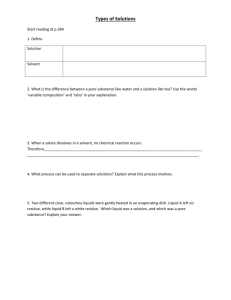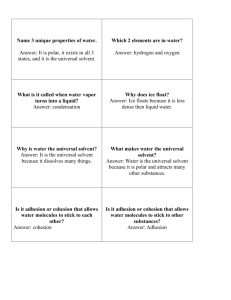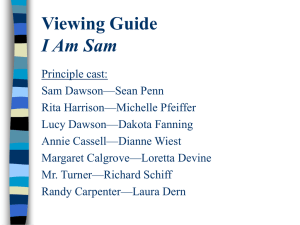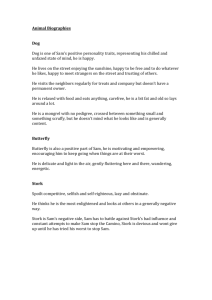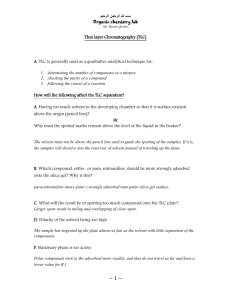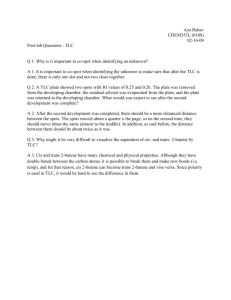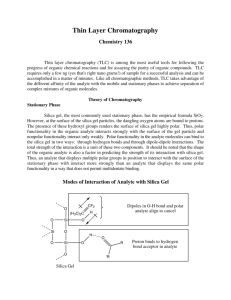fall_LFU_extra5
advertisement
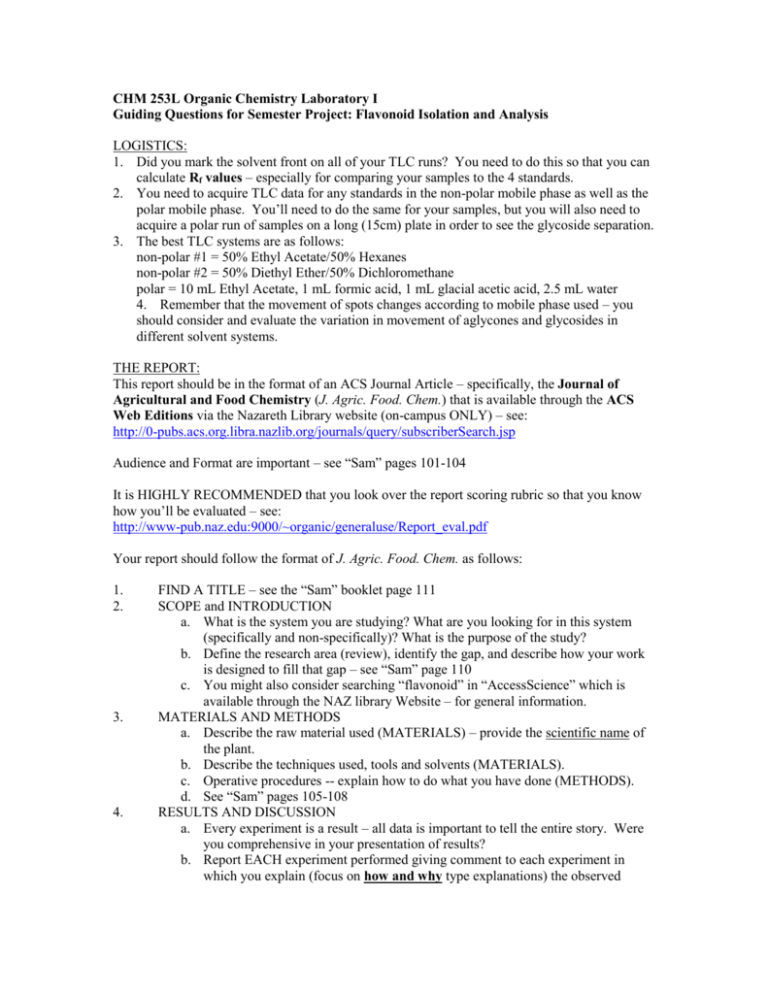
CHM 253L Organic Chemistry Laboratory I Guiding Questions for Semester Project: Flavonoid Isolation and Analysis LOGISTICS: 1. Did you mark the solvent front on all of your TLC runs? You need to do this so that you can calculate Rf values – especially for comparing your samples to the 4 standards. 2. You need to acquire TLC data for any standards in the non-polar mobile phase as well as the polar mobile phase. You’ll need to do the same for your samples, but you will also need to acquire a polar run of samples on a long (15cm) plate in order to see the glycoside separation. 3. The best TLC systems are as follows: non-polar #1 = 50% Ethyl Acetate/50% Hexanes non-polar #2 = 50% Diethyl Ether/50% Dichloromethane polar = 10 mL Ethyl Acetate, 1 mL formic acid, 1 mL glacial acetic acid, 2.5 mL water 4. Remember that the movement of spots changes according to mobile phase used – you should consider and evaluate the variation in movement of aglycones and glycosides in different solvent systems. THE REPORT: This report should be in the format of an ACS Journal Article – specifically, the Journal of Agricultural and Food Chemistry (J. Agric. Food. Chem.) that is available through the ACS Web Editions via the Nazareth Library website (on-campus ONLY) – see: http://0-pubs.acs.org.libra.nazlib.org/journals/query/subscriberSearch.jsp Audience and Format are important – see “Sam” pages 101-104 It is HIGHLY RECOMMENDED that you look over the report scoring rubric so that you know how you’ll be evaluated – see: http://www-pub.naz.edu:9000/~organic/generaluse/Report_eval.pdf Your report should follow the format of J. Agric. Food. Chem. as follows: 1. 2. 3. 4. FIND A TITLE – see the “Sam” booklet page 111 SCOPE and INTRODUCTION a. What is the system you are studying? What are you looking for in this system (specifically and non-specifically)? What is the purpose of the study? b. Define the research area (review), identify the gap, and describe how your work is designed to fill that gap – see “Sam” page 110 c. You might also consider searching “flavonoid” in “AccessScience” which is available through the NAZ library Website – for general information. MATERIALS AND METHODS a. Describe the raw material used (MATERIALS) – provide the scientific name of the plant. b. Describe the techniques used, tools and solvents (MATERIALS). c. Operative procedures -- explain how to do what you have done (METHODS). d. See “Sam” pages 105-108 RESULTS AND DISCUSSION a. Every experiment is a result – all data is important to tell the entire story. Were you comprehensive in your presentation of results? b. Report EACH experiment performed giving comment to each experiment in which you explain (focus on how and why type explanations) the observed 5. 6. changes every time you modified operative conditions giving a new/different result (for example: Is it better or not? Why is it better or not?). c. See “Sam” pages 109-110 – it is imperative that: i. Your style of writing enables the reader to move back and forth between data and text in a seamless fashion ii. You organize data into tables and graphics and that they be properly formatted (see examples in J. Agric. Food. Chem.) iii. NOTE: it is acceptable for you to compose a combined results and discussion section (they need not be separate) – your choice! REFERENCES – it is expected that you will tie your work into a larger scientific context by citing work of others from the literature. This will be especially critical for your introduction (defining the work and filling the research gap) and for the discussion (compare/contrast with the work of other scientific research groups – most relevant for HPLC results). ABSTRACT – write this LAST – see “Sam” pages111-114 GENERAL QUESTIONS/COMMENTS – to think about as you are writing your report (primarily, the discussion section) a. Did you achieve your research objective? If not, did you observe something unexpected that you were not initially looking for? Did you have results not directly related to your scope? b. If you need and if you have time, what you might you do to complete your experiment (future directions for this work)? Can you suggest alternative strategies and/or what you might do to further characterize the isolates? c. Give suggestions to someone who wants to do the same research. Are you able to indicate main advantage/disadvantage of your protocols to follow your target? Is your protocol repeatable? d. Did you provide a critical analysis of your data/results? Did you comment on your results in a way that is based on sound scientific principles? For example, does your analysis of TLC make sense given what you know about the principles of chromatographic separations? Did you provide evidence from the literature to support your conclusions? e. Did you consider the influence of variables? For example, did you consider the volume of solvent used? How about the polarity of solvent or temperature, time, etc.? How about the source itself? Is it possible that the source contains too small of a quantity to be easily isolated? f. Did you describe and assess experimental observations that might support or refute some result? g. What about working with glycosides versus aglycones? What are some of the logistical difficulties working with these different constructs? What about the fact that you were working with a phytocomplex containing MULTIPLE nonpolar as well as polar constituents? So, how do you effectively deal with such a complex mixture in terms of separation? How about in terms of identification?
